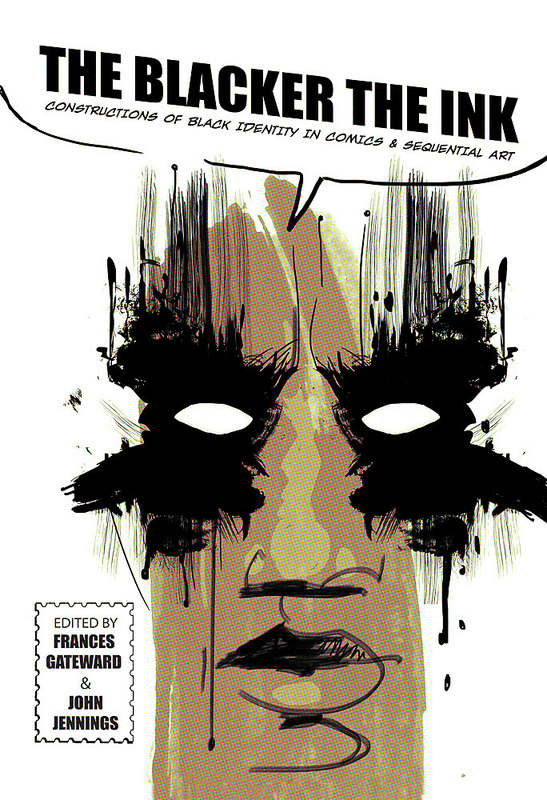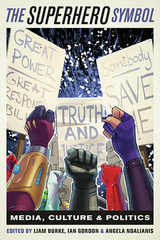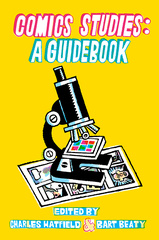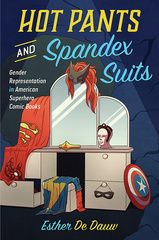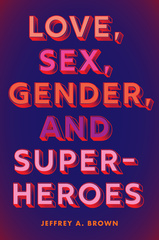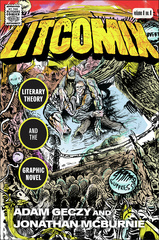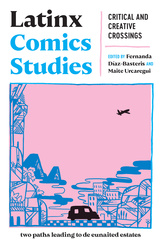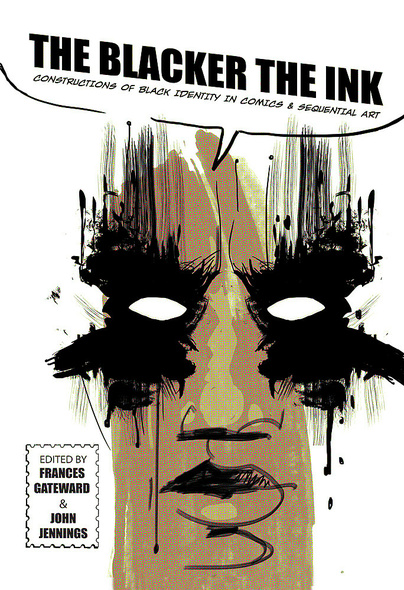
356 pages, 6 1/8 x 9 1/4
59 illustrations
Hardcover
Release Date:16 Jul 2015
ISBN:9780813572345
The Blacker the Ink
Constructions of Black Identity in Comics and Sequential Art
Edited by Frances Gateward and John Jennings
Rutgers University Press
Winner of the 2016 Will Eisner Comic Industry Award for Best Academic/Scholarly Work
Winner of the 2016 Ray and Pat Browne Award for Best Edited Collection in Popular Culture and American Culture by the Popular Culture Association/American Culture Association
Winner of the 2016 PEN Oakland-Josephine Miles Award for Excellence in Literature
When many think of comic books the first thing that comes to mind are caped crusaders and spandex-wearing super-heroes. Perhaps, inevitably, these images are of white men (and more rarely, women). It was not until the 1970s that African American superheroes such as Luke Cage, Blade, and others emerged. But as this exciting new collection reveals, these superhero comics are only one small component in a wealth of representations of black characters within comic strips, comic books, and graphic novels over the past century.
The Blacker the Ink is the first book to explore not only the diverse range of black characters in comics, but also the multitude of ways that black artists, writers, and publishers have made a mark on the industry. Organized thematically into “panels” in tribute to sequential art published in the funny pages of newspapers, the fifteen original essays take us on a journey that reaches from the African American newspaper comics of the 1930s to the Francophone graphic novels of the 2000s. Even as it demonstrates the wide spectrum of images of African Americans in comics and sequential art, the collection also identifies common character types and themes running through everything from the strip The Boondocks to the graphic novel Nat Turner.
Though it does not shy away from examining the legacy of racial stereotypes in comics and racial biases in the industry, The Blacker the Ink also offers inspiring stories of trailblazing African American artists and writers. Whether you are a diehard comic book fan or a casual reader of the funny pages, these essays will give you a new appreciation for how black characters and creators have brought a vibrant splash of color to the world of comics.
Winner of the 2016 Ray and Pat Browne Award for Best Edited Collection in Popular Culture and American Culture by the Popular Culture Association/American Culture Association
Winner of the 2016 PEN Oakland-Josephine Miles Award for Excellence in Literature
When many think of comic books the first thing that comes to mind are caped crusaders and spandex-wearing super-heroes. Perhaps, inevitably, these images are of white men (and more rarely, women). It was not until the 1970s that African American superheroes such as Luke Cage, Blade, and others emerged. But as this exciting new collection reveals, these superhero comics are only one small component in a wealth of representations of black characters within comic strips, comic books, and graphic novels over the past century.
The Blacker the Ink is the first book to explore not only the diverse range of black characters in comics, but also the multitude of ways that black artists, writers, and publishers have made a mark on the industry. Organized thematically into “panels” in tribute to sequential art published in the funny pages of newspapers, the fifteen original essays take us on a journey that reaches from the African American newspaper comics of the 1930s to the Francophone graphic novels of the 2000s. Even as it demonstrates the wide spectrum of images of African Americans in comics and sequential art, the collection also identifies common character types and themes running through everything from the strip The Boondocks to the graphic novel Nat Turner.
Though it does not shy away from examining the legacy of racial stereotypes in comics and racial biases in the industry, The Blacker the Ink also offers inspiring stories of trailblazing African American artists and writers. Whether you are a diehard comic book fan or a casual reader of the funny pages, these essays will give you a new appreciation for how black characters and creators have brought a vibrant splash of color to the world of comics.
A fascinating look at the growing complexity and diversity in representations of Blackness in comics, graphic novels and sequential art.
Like the comics selected for analysis, this collection of essays works to expand our understanding of the mediums of Blackness and comics. Through observant and meticulous close readings of comic books, newspaper comic strips, digital comics, and graphic novels, alongside the respective sociohistorical and cultural contexts of their production, dissemination, and consumption, the contributors shed light on overlooked and perhaps unknown cartoonists and stories from the past, provide new insight on well-known comics and histories, and challenge our understanding of what constitutes black comics.
An essential guide for anyone interested in the intersections between race and comics, this volume is full of startling and original insights about the creators, comics, and graphic novels that represent people of African descent from the 1930s to the present.
This volume provides what has been lacking in some previous work—variety of content, precision of approach and execution, and depth of analyses … The Blacker the Ink advances the study of black comics significantly by offering new insights and a wealth of information free of gobbledygook ... Highly recommended.
An important collection for academics and fan communities as we continue to expand scholarship on Black comics, their histories and their creators.
The Blacker the Ink features an emerging methodology that may be characteristic of, and useful for, the continued development of black comics studies.
FRANCES GATEWARD is an associate professor in the department of cinema and television arts at California State University-Northridge. She is the editor of Seoul Searching: Cultural Identity and Cinema in South Korea.
JOHN JENNINGS is a professor of media and cultural studies, University of California Riverside where he is Nasir Jones Hiphop Fellow. He is the author of Black Comix: African American Independent Comics, the award-winning graphic novel The Hole: Consumer Culture, and the national bestseller, Kindred, a graphic adaption of Octavia Butler's classic novel.
Acknowledgments
Introduction: The Sweeter the Christmas
Panel I: Black Is a Dangerous Color
1 "No Sweat!:” EC Comics, Cold War Censorship, and the Troublesome Colors of “Judgment Day!”
2 Sex in Yop City: Ivorian Femininity and Masculinity in Abouet and Oubrerie’s Aya
3 A Postcolony in Pieces: Black Faces, White Masks and Queer Potentials in Unknown Soldier
Panel II: Black in Black and White and Color
4 Fashion in the Funny Papers: Cartoonist Jackie Ormes’s American Look
5 Graphic Remix: The Lateral Appropriation of Black Nationalism in Aaron McGruder’s The Boondocks
Panel III: Black Tights
6 American Truths: Blackness and the American Superhero
7 Drawn into Dialogue: Comic Book Culture and the Scene of Controversy in Milestone Media’s Icon
8 Critical Afrofuturism: A Case Study in Visual Rhetoric, Sequential Art, and Post-Apocalyptic Black Identity
9 Bare Chests, Silver Tiaras and Removable Afros: The Visual Design of Black Comic Book Superheroes
Panel IV: Graphic Blackness
10 Daddy Cool: Donald Goines’s “Visual Novel”
11 The Blues Tragicomic: Constructing the Black Folk Subject in Stagger Lee
12 Provocation Through Polyphony: Kyle Baker’s Nat Turner
13 Performance Geography: Making Space in Jeremy Love’s Bayou, Volume 1
14 A Secret History of Miscegenation: Jimmy Corrigan and the Columbian Exposition of 1893
15 It’s a Hero?: Black Comics and Satirizing Subjection
Notes on Contributors
Index

